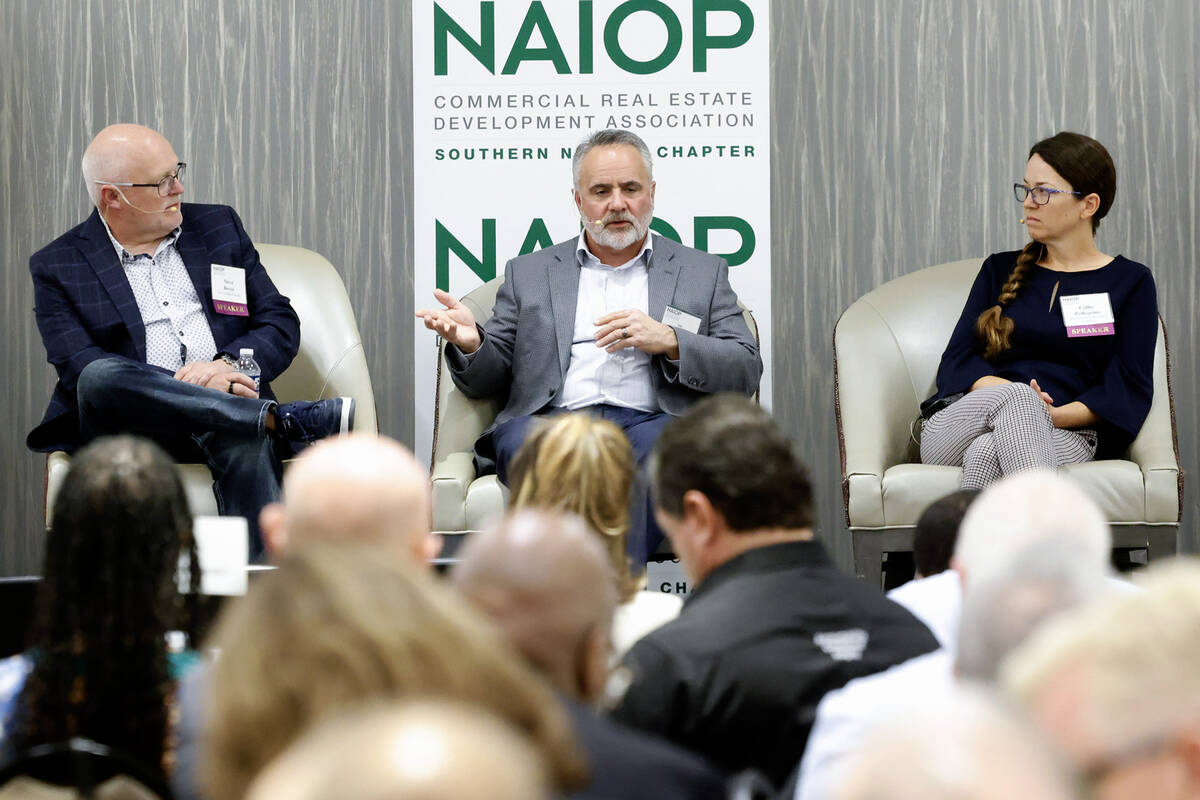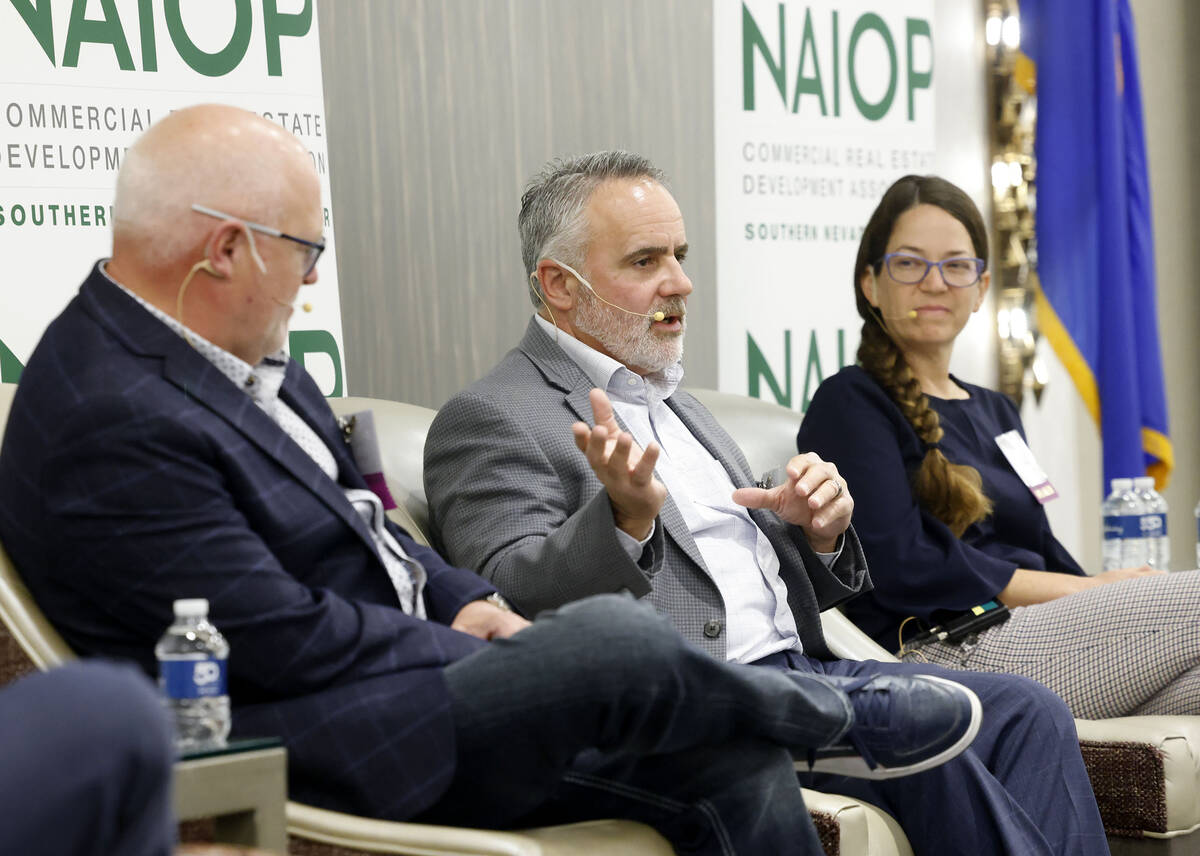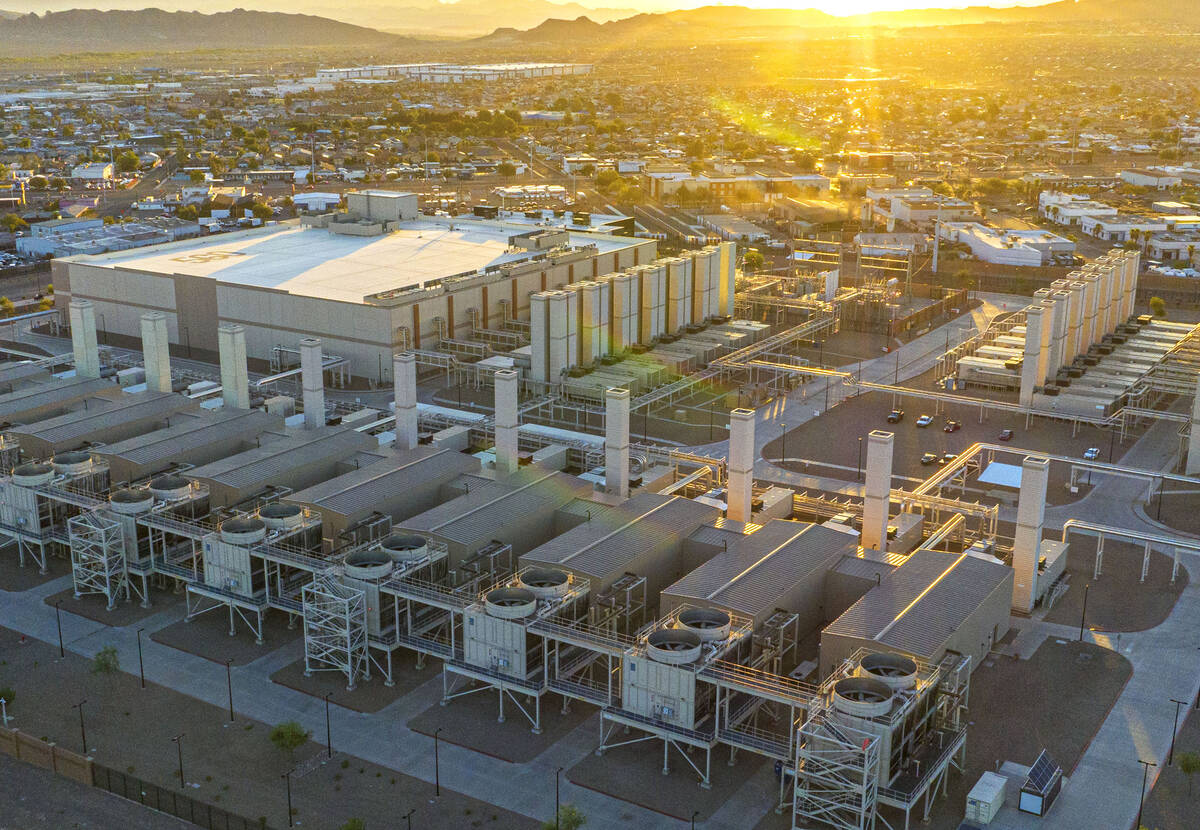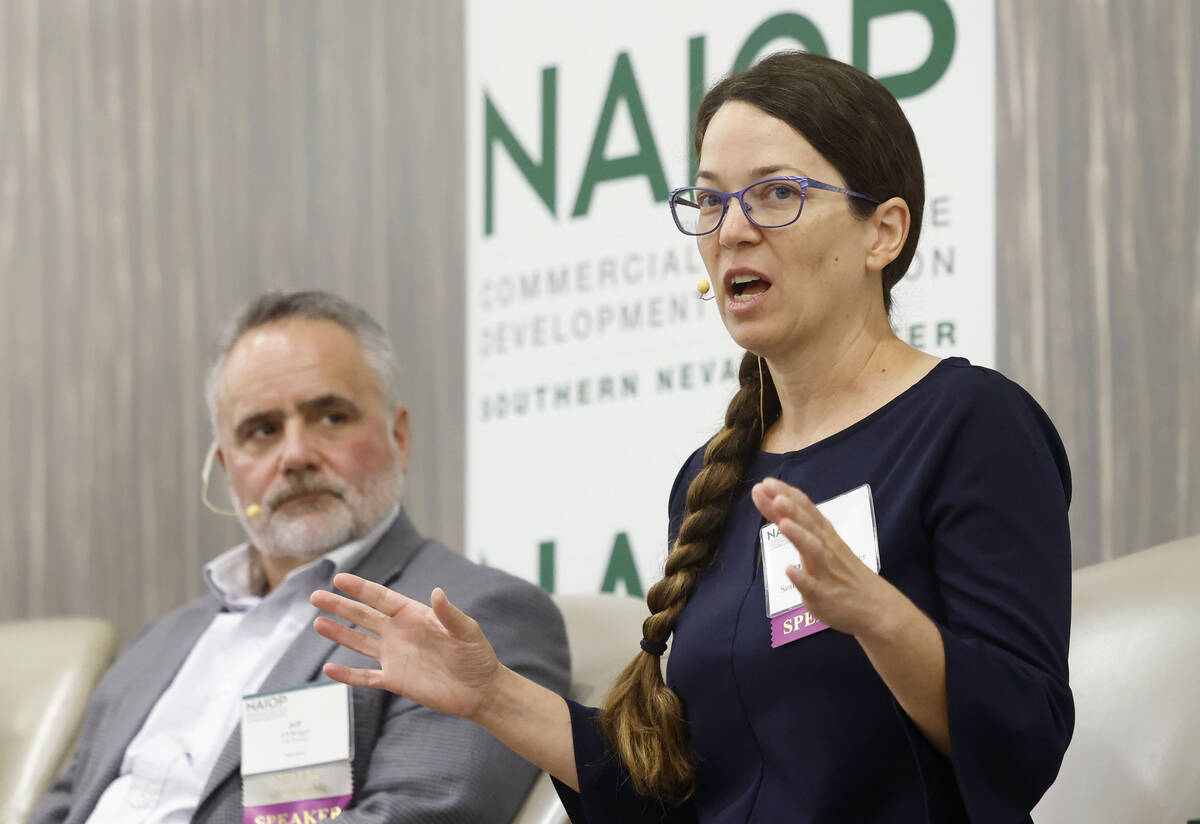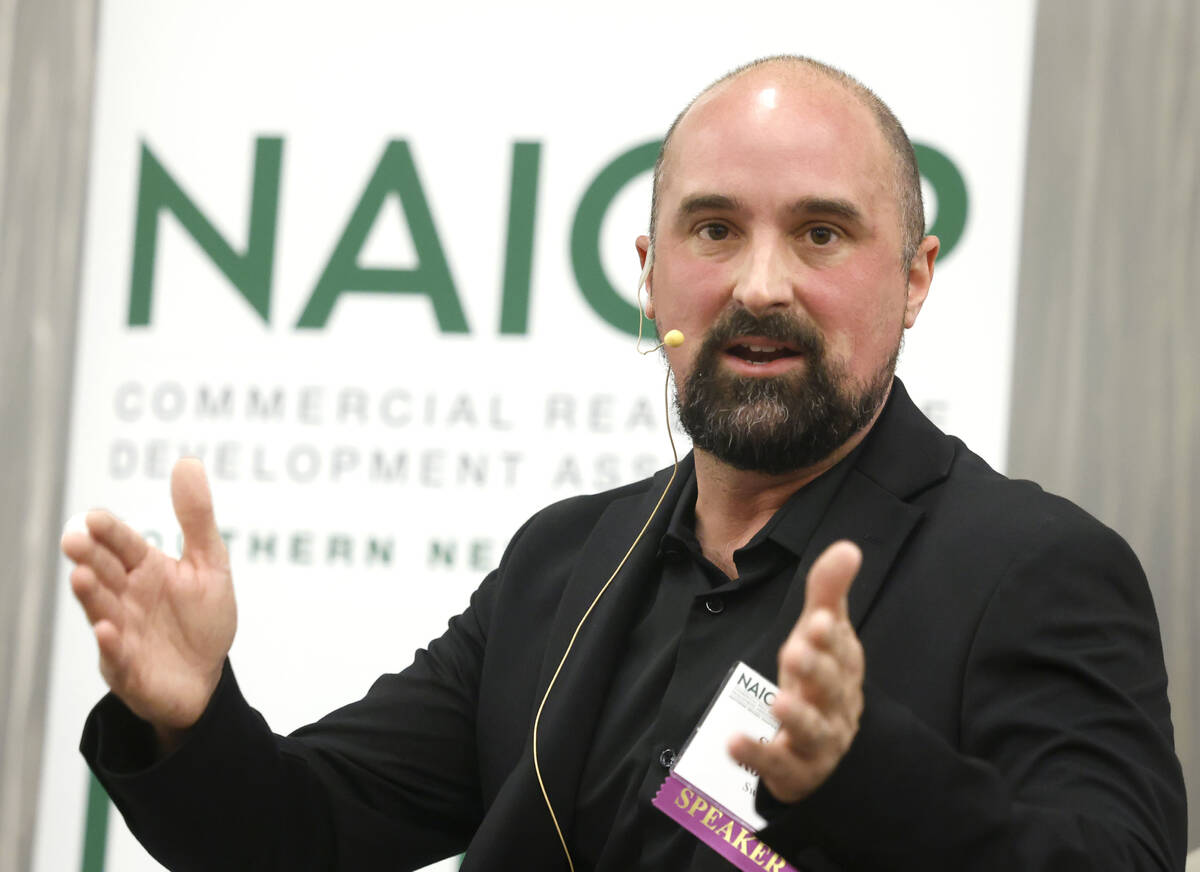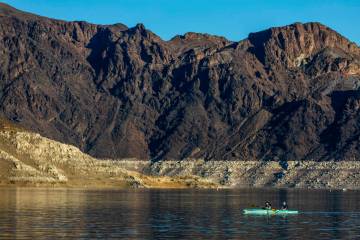‘Unprecedented’: Data centers want to triple Nevada’s energy grid capacity
Data centers are racing to secure the power generation they need to exist in Nevada — and that’s not a fad that will die off in a few years, business and utility leaders say.
Jeff Brigger, NV Energy’s director of business development and major accounts, said on a panel Thursday that data centers are driving requests to triple the peak demand of the utility, which is about 9,000 megawatts during bouts of heat.
“These are unprecedented times,” Brigger said. “We are excited to serve this load. We think there’s huge opportunity here to do so, and we will. We’ll continue to pursue options to do that, but we have to look at it from the perspective that we cannot impact our existing customer base.”
Brigger spoke on a data-center-focused panel Thursday at The Orleans hosted by NAIOP Southern Nevada, a commercial real estate development association. Joining him was Colby Pellegrino, deputy general manager of the Southern Nevada Water Authority, and two executives from Switch and Novva Data Centers.
Big tech’s big ask
Companies want to add between 21,000 and 22,000 MW to that bottom line, he said, while NV Energy wants to make sure customers don’t experience disruptions to service or a significant increase in bill costs.
The utility has agreed to dole out about 3,000 to 4,000 MW worth of power so far, Brigger said. It’s not a unique conundrum as tech companies fan out across the country to build data centers. However, Nevada has unique constraints.
Experts have previously told the Las Vegas Review-Journal that energy grid capacity continues to drive the data center market countrywide, though Southern Nevada’s strict water conservation ordinances tend to provide extra barriers.
“Look at the investment in data centers. If that wasn’t there, very likely our country would be in a recession,” said Brent Nasset, panel moderator and a project manager at the consulting firm Kimley-Horn. “There’s a lot of challenges with data centers, but there’s also a tremendous amount of opportunity.”
Brigger pointed to the multibillion-dollar Greenlink West and North transmission lines as a saving grace for supplying energy demand. Those cross-Nevada lines will unlock 5,000 MW of renewable energy projects and open the door for more solar farms in rural parts of the state.
“Thank goodness our leadership team had the foresight to build that,” Brigger said. “I don’t think we intended to build that for data center load, but it’s certainly beneficial.”
Just last week, state energy regulators approved a plan where Southern Nevada customers would pay for a portion of construction costs — a potential increase of roughly $2.18 to $2.21 a month. That’s half of the increase that NV Energy had sought.
In many cases, NV Energy is working with tech companies to have them foot the cost for building new sources of energy generation, Brigger added.
The water question
Perhaps the most significant development restraint came after the COVID-19 pandemic, when the regional water authority took aim at evaporative cooling systems, or ways to cool that use water that cannot be captured and reused.
No building permits with evaporative cooling have been approved since February 2024, and applications for such building permits have not been accepted since September 2023, according to a water authority spokesman.
Pellegrino said implementing that regional moratorium was “one of the more difficult” actions the agency has taken to safeguard the region’s water supply. It became apparent that the resort sector needed to innovate away from the systems when water use remained stagnant even when the Strip was shut down, she said.
“This is not the only place we’re asking the community to do hard things,” Pellegrino said, pointing to septic-to-sewer conversions and a similar ban on new golf courses. “It’s really an all-hands-on-deck approach.”
But some water-intensive data centers went live before the moratorium took effect.
Data requested by the Las Vegas Review-Journal through a public records request revealed that data centers in Southern Nevada used 716 million gallons of water in 2024 — enough to sustain about 4,395 single-family households for a year.
That number represents consumptive use, or water that wasn’t recycled and sent back to Lake Mead, the region’s primary water source with a poor outlook.
The Northern Nevada data center market, particularly at the Tahoe-Reno Industrial Center, has emerged at the forefront of the global market, but without such a restriction on water-intensive cooling systems.
A failed 2024 legislative effort from Assemblymember Lisa Cole, R-Las Vegas, proposed a law that would have prevented evaporative cooling bans throughout the state.
Conversations are ongoing between utilities and tech executives to balance the needs of the economy and everyday Nevadans, panelists said.
What was certain is that data centers aren’t going away. Neither are their drawbacks, which are forcing leaders to find solutions.
Contact Alan Halaly at ahalaly@reviewjournal.com. Follow @AlanHalaly on X.



